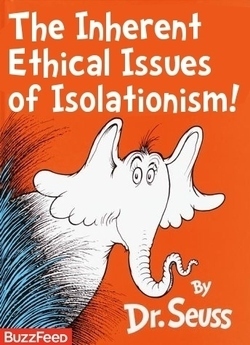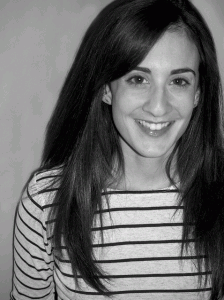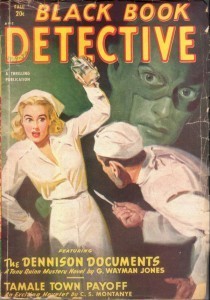The Paris Review's Blog, page 855
January 17, 2013
Didactic Seuss, and Other News
If Dr. Seuss books were titled according to their subtexts, they would be harder to read.
Conversely, can you ID these books from their phantom covers? It’s nearly impossible!
A cache of Robert Burns manuscripts and letters has been discovered—a major find.
The 2013 Yale Writers’ Conference is now accepting applications. Je Banach will lead a seminar on literary discourse; visiting faculty includes Tom Perrotta, Susan Orlean, and ZZ Packer.
“By all means be experimental, but let the reader be part of the experiment.” Sebald’s writing tips, compiled by his students.
January 16, 2013
Sir George Douglas’s “The Strange Visitor”
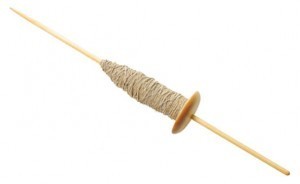 When my brother and I were small, our parents would read to us each evening. When it was my mother’s turn, she generally read poetry. I don’t know from which children’s collection she read, but it was terrifying: in particularly heavy rotation (at my request) were “Don’t Care,” in which the insouciant protagonist is made to care by being “put in a pot / and boiled til he was done,” “Ozymandias” (I found the idea of the head lying in the sand frightening), and my favorite, “Strange Visitor.”
When my brother and I were small, our parents would read to us each evening. When it was my mother’s turn, she generally read poetry. I don’t know from which children’s collection she read, but it was terrifying: in particularly heavy rotation (at my request) were “Don’t Care,” in which the insouciant protagonist is made to care by being “put in a pot / and boiled til he was done,” “Ozymandias” (I found the idea of the head lying in the sand frightening), and my favorite, “Strange Visitor.”
When I decided to find the poem online, I came across several variations; in the original, compiled by the folklorist Sir George Douglas, the dialect is Scottish; in other adaptations (including that anthologized by George Jacobs) more modern English. The plot is always the same: a woman, sitting at her spinning wheel, wishes for company. A series of mismatched, disembodied parts come in—knees, shoulders, neck, hands—and the figure gives a series of gnomic answers to her questions. “What have you come for?” she asks at last. “FOR YOU!” the reader shouts, leaving any listening children in a state of blissful petrification. The following is Douglas’s transcription, and his stage directions.
For Reference
As any of our interns, currently fact-checking our Spring issue, will tell you, research is glamorous work. But in case you needed proof:
Tender Spirits: A Conversation with Marie-Helene Bertino
In October, Marie-Helene Bertino published her debut collection of short stories, Safe as Houses. Her writing often involves fantastical elements—an embodied idea of an ex-boyfriend, an alien who faxes observations about human beings to her home planet, a woman who brings Bob Dylan home for Thanksgiving dinner—that advance painful story lines. Her language is spare, direct, and hilarious, which makes the characters’ losses that much more deeply felt. Bertino is now at work on a novel centering on a jazz club in Philadelphia called the Cat’s Pajamas.
We spoke for two hours in a Brooklyn coffee shop, which was flooded with girls on their lunch break from school.
Reading Safe as Houses, I was struck by the number of characters who aren’t really seen by others. By the last few stories, the characters start to become more visible. Does that theme ring true to you?
I would totally agree with that, though I was not conscious of it. I was aware that a lot of characters were on the outskirts of something—of their towns, their groups of friends, their families, their societies. And at the risk of sounding cliché, I think that’s a metaphor for being a writer. I mean literally and figuratively—you have to stand on the outside to watch a group of people and then be able to write about them, but in practice, it’s also a solitary art, as they say. And I think that those characters definitely are a reflection of that kind of observer quality in me.
Writing in Jewish, and Other News
The literature of Washington, D. C.?
Ah, the old “” conundrum.
Children, it seems, like real books.
Philip Roth: “I don’t write in Jewish, I write in American.”
Here is a house constructed around an enormous bookshelf.
January 15, 2013
On The Road Again
A dirt road scrolls beneath a pair of huarache sandals. In a flash, it turns from moonlit to sunlit, and the pebbly dirt smoothes to bleached, cracked concrete. The shot lingers three or four beats longer than it should, the camera gliding over the road as the sandals flop and their owner huffs. Cue title card. This sequence—the opening shots of Walter Salles’s wildly uneven, flickeringly vivid new film adaptation of On The Road—foregrounds the oft-overlooked double entendre nested in the novel’s title: it is both a romantic portrait of life “on the road” and a ruminative discourse on roads. Later in the film occurs a similar shot, this time of the highway’s surface streaking by like a meteor shower, as Sal Paradise intones: “The purity of the road. The white line in the middle of the highway unrolled and hugged our left front tire as if glued to our groove. And zoom went the car, and we were off again, to California.”
Throughout the book, Kerouac expresses awe at the vast interconnectedness that the American road system allows—an epiphany so common it barely registers for modern readers. But half a century ago, it still struck with a bright clang.Read More »
The Joys of Reading
The anniversary of the British Museum led me to spend a few hours wandering their extensive online collections. This print, made by Marcel Jules Gingembre d’Aubépine around 1886, is called Les joies du bibliophile.
A Visit with Evan S. Connell
Evan S. Connell, who died last week, was eighty-six when I interviewed him at Ponce de Leon, a nursing home in Santa Fe, New Mexico, where he had moved after selling his condominium at Fort Marcy. He had lived an incredibly solitary life. One of his caretakers mentioned that some of the other residents assumed at first that he was mute. I wish that the transcribed text that follows better reflected Mr. Connell’s timbre, because you’d be able to hear the way his inarticulacy was equal parts reticence and modesty. He had a wonderful laugh, a huh-huh-huh, gentle and self-deprecating. You could tell he was accustomed to downplaying his erudition. But he clearly wanted to communicate what he considered important.
Conspiracy Theories, and Other News
Literary conspiracy theories, anyone?
Paragraph is a new app that curates great short stories. (Yes, we are represented!)
And, inevitably, iambic pentameter bots.
What would Jesus eat? The subgenre of Christian cookbooks.
And ... the National Book Critics Circle finalists are announced.
January 14, 2013
ThunderStick
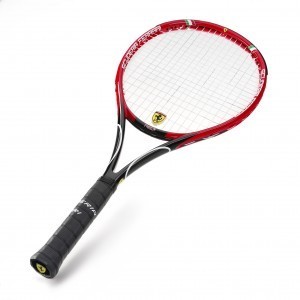 It came in a box. A big box, with two or three others. Sam had finally cleaned house.
It came in a box. A big box, with two or three others. Sam had finally cleaned house.
It’s not every day you get a box of tennis racquets in the mail. I ripped it open and immediately shook hands with each one.
“Now guys, shake hands with the racquet.” If I’d said that once I’d said it, I don’t know, maybe twenty-five times. Once for each tennis clinic I’d taught for little kids over high school summers. Kids who’d devised a game called Hit the Ball at the Teacher, which they’d passed on to their younger brothers and sisters, the little buggers.
There was a Yonex in the box that felt cold and distant—the shake of a bureaucrat. There was another I’ve since given away that felt insubstantial—the absent shake of someone scanning the room for more important hands. And then there was the Prince. I swear to you, the Prince’s handle still felt warm.
The grip was slightly sticky—as a good grip should be—and worn where my right index finger curled up the beveled edge of the shaft. It filled my palm easily and comfortably: the racquet’s way of looking me straight in the eye as our hands met. This was Emma’s racquet.
The frame was a little slick for my tastes. Shiny black, with an aqua-blue and pink blaze up both sides of the head that looked like rain blotches on a Doppler weather map. And it was called ThunderStick. There was a lightning bolt through the diagonal slash of the n “Thunder.”
“Lord, did Emma know that?” I wondered. Not her style. And there was another message from the manufacturer along the inside rim: “Sweet Spot Suspension.” If that were true, I figured it was okay that it looked a little cheesy and was called ThunderStick.
I fingered the strings and saw they were worn, with little bits of neon-yellow fuzz stuck at the junctions where the vertical and horizontal rows overlapped. Evidence that this racquet was not new. Evidence that Emma had hit with it.
The Paris Review's Blog
- The Paris Review's profile
- 305 followers


